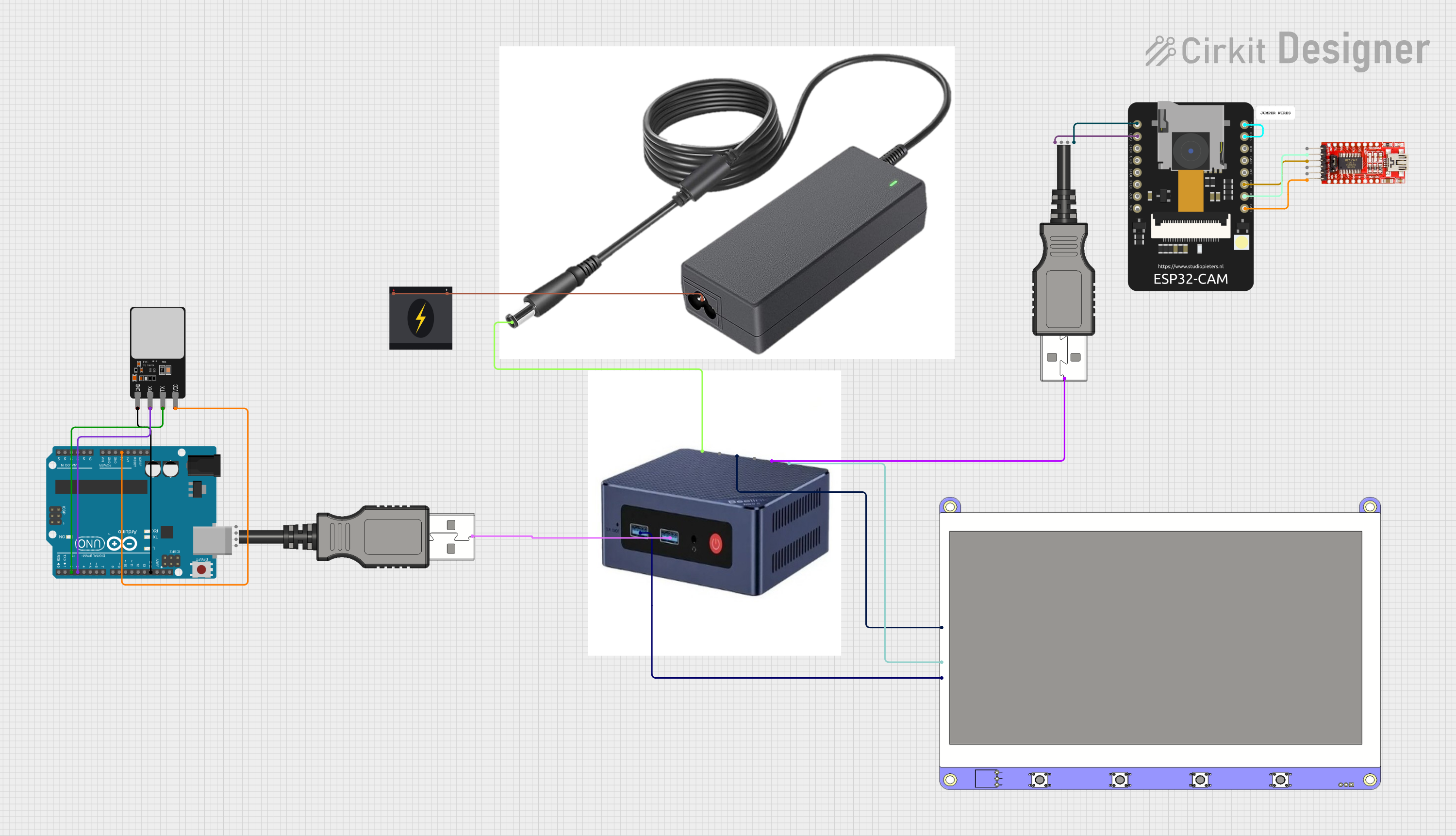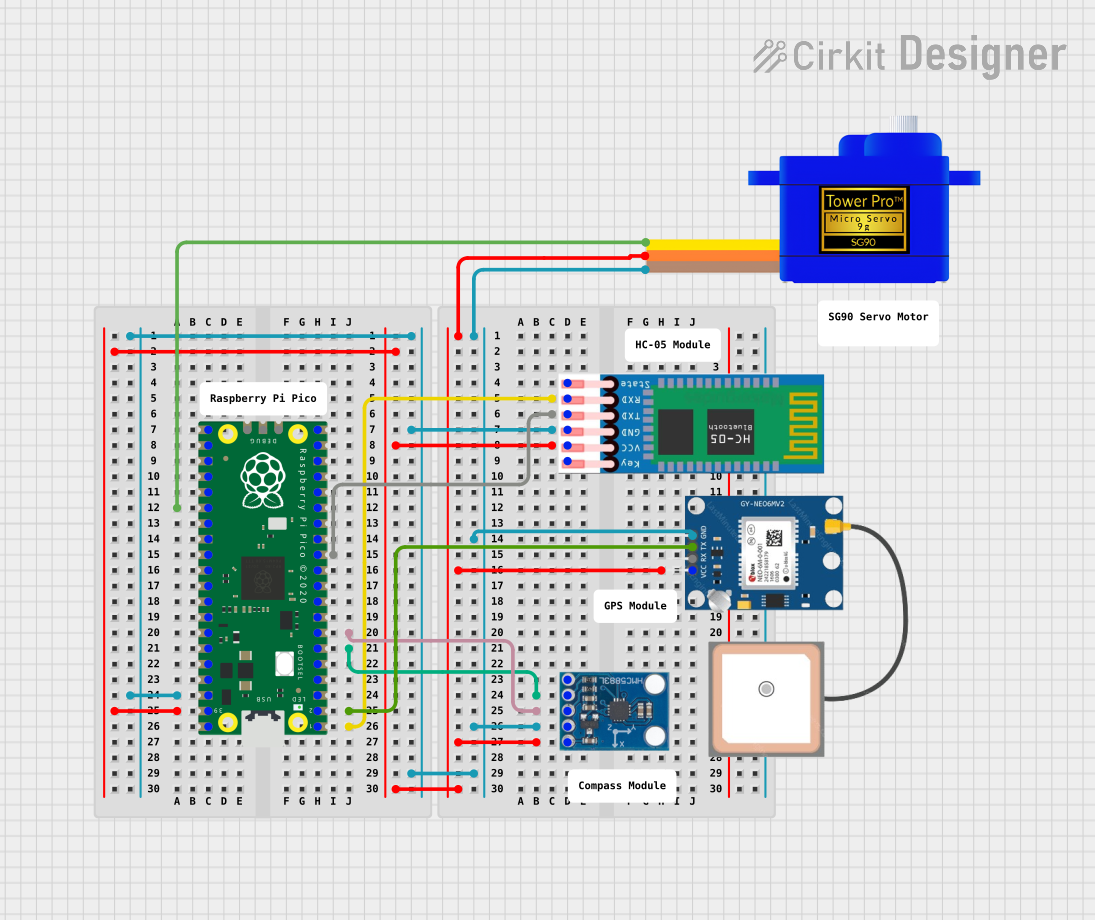
How to Use Nano Supermini: Examples, Pinouts, and Specs

 Design with Nano Supermini in Cirkit Designer
Design with Nano Supermini in Cirkit DesignerIntroduction
The Nano Supermini is a compact and lightweight microcontroller board developed by Arduino. It is specifically designed for small-scale projects where space and power efficiency are critical. Despite its small size, the Nano Supermini offers versatile connectivity options and robust performance, making it an excellent choice for hobbyists, students, and professionals alike.
Explore Projects Built with Nano Supermini

 Open Project in Cirkit Designer
Open Project in Cirkit Designer
 Open Project in Cirkit Designer
Open Project in Cirkit Designer
 Open Project in Cirkit Designer
Open Project in Cirkit Designer
 Open Project in Cirkit Designer
Open Project in Cirkit DesignerExplore Projects Built with Nano Supermini

 Open Project in Cirkit Designer
Open Project in Cirkit Designer
 Open Project in Cirkit Designer
Open Project in Cirkit Designer
 Open Project in Cirkit Designer
Open Project in Cirkit Designer
 Open Project in Cirkit Designer
Open Project in Cirkit DesignerCommon Applications and Use Cases
- Wearable electronics
- IoT (Internet of Things) devices
- Portable data loggers
- Robotics and automation
- Prototyping small-scale embedded systems
Technical Specifications
The Nano Supermini is built to deliver reliable performance in a compact form factor. Below are its key technical details:
| Specification | Details |
|---|---|
| Microcontroller | ATmega328P |
| Operating Voltage | 5V |
| Input Voltage (VIN) | 7-12V |
| Digital I/O Pins | 14 (6 PWM outputs) |
| Analog Input Pins | 8 |
| Flash Memory | 32 KB (2 KB used by bootloader) |
| SRAM | 2 KB |
| EEPROM | 1 KB |
| Clock Speed | 16 MHz |
| Dimensions | 18 x 45 mm |
| Weight | 7 grams |
Pin Configuration and Descriptions
The Nano Supermini features a total of 30 pins, including power, digital, and analog pins. Below is the pinout description:
| Pin | Type | Description |
|---|---|---|
| VIN | Power Input | External power input (7-12V). |
| GND | Ground | Ground connection. |
| 5V | Power Output | Regulated 5V output. |
| 3.3V | Power Output | Regulated 3.3V output. |
| A0-A7 | Analog Input | Analog input pins (10-bit resolution). |
| D0-D13 | Digital I/O | Digital input/output pins. |
| PWM Pins | Digital I/O | D3, D5, D6, D9, D10, D11 support PWM output. |
| TX (D1) | UART TX | Transmit pin for serial communication. |
| RX (D0) | UART RX | Receive pin for serial communication. |
| RESET | Reset | Resets the microcontroller. |
Usage Instructions
The Nano Supermini is easy to integrate into a variety of projects. Follow these steps to get started:
Step 1: Powering the Board
- The board can be powered via the USB port or an external power source through the VIN pin.
- Ensure the input voltage is within the range of 7-12V when using the VIN pin.
Step 2: Programming the Board
- Connect the Nano Supermini to your computer using a USB cable.
- Open the Arduino IDE and select Tools > Board > Arduino Nano.
- Choose the correct port under Tools > Port.
- Write or load your program and click the Upload button.
Step 3: Connecting Components
- Use the digital and analog pins to connect sensors, actuators, and other peripherals.
- For PWM control, use pins D3, D5, D6, D9, D10, or D11.
Example: Blinking an LED
Here is a simple example to blink an LED connected to pin D13:
// This program blinks an LED connected to pin D13 on the Nano Supermini.
void setup() {
pinMode(13, OUTPUT); // Set pin D13 as an output pin
}
void loop() {
digitalWrite(13, HIGH); // Turn the LED on
delay(1000); // Wait for 1 second
digitalWrite(13, LOW); // Turn the LED off
delay(1000); // Wait for 1 second
}
Important Considerations
- Avoid exceeding the maximum current rating of the pins (40mA per pin).
- Use appropriate resistors when connecting LEDs or other components to prevent damage.
- Ensure proper grounding for stable operation.
Troubleshooting and FAQs
Common Issues and Solutions
The board is not detected by the computer.
- Ensure the USB cable is functional and properly connected.
- Install the necessary drivers for the Nano Supermini in the Arduino IDE.
Program upload fails.
- Verify the correct board and port are selected in the Arduino IDE.
- Press the reset button on the board before uploading the program.
The board overheats.
- Check for short circuits in your circuit connections.
- Ensure the input voltage does not exceed the recommended range.
Analog readings are unstable.
- Use a capacitor between the analog input pin and ground to filter noise.
- Ensure proper grounding of all components in the circuit.
FAQs
Q: Can the Nano Supermini run on battery power?
A: Yes, the board can be powered using a battery connected to the VIN pin, provided the voltage is between 7-12V.
Q: Is the Nano Supermini compatible with Arduino shields?
A: Due to its compact size, the Nano Supermini is not directly compatible with standard Arduino shields. However, it can be used with custom shields or breakout boards.
Q: How do I reset the board?
A: Press the reset button on the board, or connect the RESET pin to GND momentarily.
Q: Can I use the Nano Supermini for wireless communication?
A: Yes, you can connect external wireless modules (e.g., Bluetooth, Wi-Fi) to the board via its digital or UART pins.
By following this documentation, you can effectively utilize the Nano Supermini in your projects. Happy tinkering!